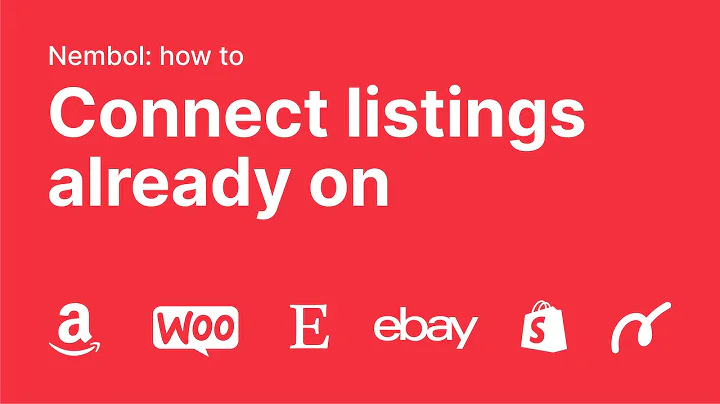Setup Shopify Payments: Easy Step-by-Step Guide
Table of Contents
- Introduction: Setting Up Your Shopify Payments
- Step 1: Activating Your Shopify Account
- Step 2: Updating Your Store Details
- Step 3: Setting Up Taxes
- Step 4: Choosing a Payment Provider
- Step 5: Selecting Payment Methods
- Step 6: Enabling Stripe
- Step 7: Setup Manual Payment Method
- Step 8: Accepting Bitcoin Payments
- Conclusion: Optimizing Your Shopify Payments
How to Set Up Your Shopify Payments
Are you looking to start selling and making money online? Shopify is an excellent platform for launching your online store and generating revenue through dropshipping, print-on-demand, and more. In this step-by-step tutorial, I will guide you through the process of setting up your Shopify payments in a simple and easy way.
Step 1: Activating Your Shopify Account
Before you can start receiving payments and selling products, you need to have a successful plan. In your Shopify account settings, switch from trial mode to a basic Shopify account. To get an exclusive offer of three months for just one dollar, use the link provided in the description. Once you have activated your plan and website, you can proceed to the next steps.
Step 2: Updating Your Store Details
It is essential to provide accurate information about your store. In the store details section of your settings, fill in your store name, phone number, email address, and contact mail. Confirm your email for added security and verify your profile. Additionally, set up your store currency, time zone, order ID format, and taxes. Make sure to choose the right tax rate based on the country you are currently residing in.
Step 3: Setting Up Taxes
Taxes play a crucial role in e-commerce. Choose your country of residence, as this will determine the taxes and duties you need to pay. Set the tax rate according to your location, typically around 4-5%. It is important to accurately configure this section to comply with tax regulations and avoid any legal issues.
Step 4: Choosing a Payment Provider
To receive payments, you will need a credit or debit card or an alternative payment platform. In the payments section of your settings, explore the available payment providers. Shopify Payments, if available in your country, is one of the most convenient options. PayPal is another popular choice for receiving payments, but ensure you have a linked bank account. Select the provider that suits your needs and set up an account if necessary.
Step 5: Selecting Payment Methods
Once you have chosen a payment provider, it is time to configure your payment methods. By default, you should accept Visa and MasterCard payments. Enable popular options like PayPal and Apple Pay if they are available to you. Consider the preferences of your target audience and aim to offer diverse payment methods to improve customer satisfaction.
Step 6: Enabling Stripe
Stripe is a widely accepted payment provider that is accessible in many countries. If available to you, set up an account or log in to enable stripe as a payment provider for your store. Once Stripe is enabled, the payment provider options should appear automatically in your Shopify account.
Step 7: Setup Manual Payment Method
In case you encounter any issues with the available payment providers, Shopify offers a manual payment method. This option allows you to receive payments via bank deposit, money order, or cash on delivery. For example, if you choose to use Western Union, set up an account and configure it as a custom payment method in Shopify. Provide additional details for customers to easily select this payment option during checkout.
Step 8: Accepting Bitcoin Payments
To enhance the security and appeal of your payment options, consider accepting Bitcoin. Create a custom payment method and provide your Bitcoin address. Specify that payments can only be made with Bitcoin and educate customers about how to set up their own digital wallets. Explore popular platforms like Coinbase or Binance to create your Bitcoin address.
Conclusion: Optimizing Your Shopify Payments
Congratulations! You have successfully set up your Shopify payments. By following these steps, you have ensured that your online store is ready to accept various payment methods. Remember to regularly review and optimize your payment options to cater to the evolving needs and preferences of your customers. Good luck with your online store, and happy selling!
Highlights
- Step-by-step guide to setting up Shopify payments
- Activate your Shopify account and website
- Update store details for accuracy and security
- Set up taxes to comply with regulations
- Choose a payment provider based on availability and convenience
- Select payment methods to accommodate customer preferences
- Enable Stripe as a payment provider if accessible in your country
- Explore manual payment methods like Western Union for alternative options
- Consider accepting Bitcoin for enhanced security and flexibility
- Regularly optimize your payment options to keep up with customer needs
FAQ
Q: Can I use Shopify Payments if I don't have a bank account?
A: Yes, you can use alternative payment platforms like PayPal, which do not require a bank account. However, if you want to transfer funds to your bank account, a linked bank account is necessary.
Q: Are there additional fees for using third-party payment providers?
A: Yes, third-party payment providers may have their own transaction fees. It's essential to review and compare the rates for each payment provider to make an informed decision.
Q: Can I set up multiple payment methods on my Shopify store?
A: Absolutely! Shopify allows you to enable multiple payment methods to cater to your customers' preferences and increase the chances of completing a purchase.
Q: Is it mandatory to set up taxes for my Shopify store?
A: Yes, it is crucial to configure taxes correctly to comply with the regulations of the country you are operating in. Incorrect tax settings can lead to legal complications.
Q: What are the benefits of accepting Bitcoin payments?
A: Accepting Bitcoin can provide added security and privacy for both the buyer and the seller. It also allows you to tap into a growing community of Bitcoin users who prefer using cryptocurrency for online transactions.


















